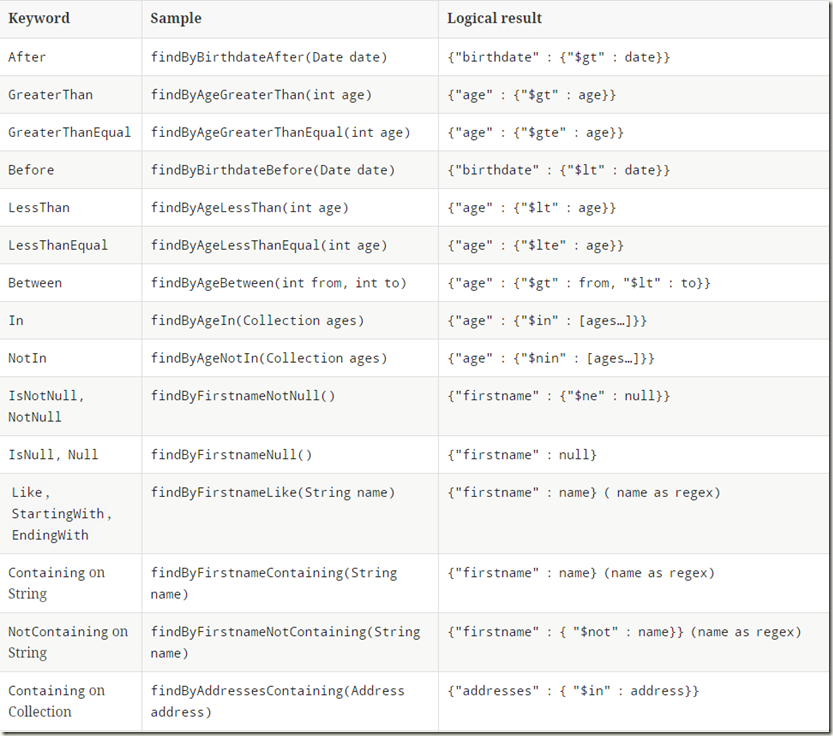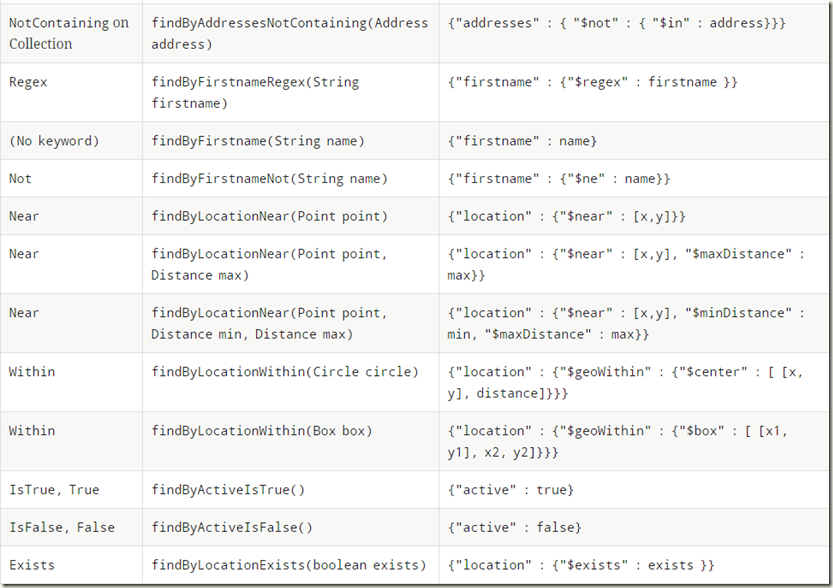使用SpringBoot提供的@Repository接口,可以完成曾经需要大量代码编写和配置文件定制工作。这些以前让新手程序员头疼,让有经验的程序员引以为傲的配置,由于框架的不断完善,变得不那么重要,同时,也提升了程序员的工作效率。
本文介绍的是如何通过springboot操作MongoDB。
一.先配置pom.xml
<parent>
<groupId>org.springframework.boot</groupId>
<artifactId>spring-boot-starter-parent</artifactId>
<version>1.4.1.RELEASE</version>
<relativePath /> <!-- lookup parent from repository -->
</parent>
<dependencies>
<dependency>
<groupId>org.springframework.boot</groupId>
<artifactId>spring-boot-starter-web</artifactId>
</dependency>
<dependency>
<groupId>org.springframework.boot</groupId>
<artifactId>spring-boot-starter-tomcat</artifactId>
</dependency>
<dependency>
<groupId>org.springframework.boot</groupId>
<artifactId>spring-boot-starter-data-mongodb</artifactId>
</dependency>
</dependencies>
二.在application.properties中配置MongoDB配置
spring.data.mongodb.uri=mongodb://root:root@localhost:27017/test
三.声明entity和repository
@Document(collection = "t_app")
@Data
public class App
{
@Id
private ObjectId id;
@Field("api_key")
private String apiKey;
private String appname;
private List<Object> activities;
}
@Repository
public interface AppRepository extends MongoRepository<App, ObjectId>
{
App findOneByApiKey(String apiKey);
}
四.支持的Repository
ps:KeyWord可以用and方法连起来。
如:
List<DiscountCode> findFirst5ByActivityIdInAndEndTimeAfterAndStatus(List<ObjectId> activityIds, Date endTime,String status);
五.Repository声明和使用
@Autowired private AppRepository appRepository;


